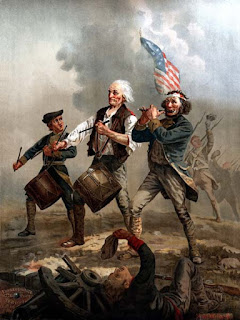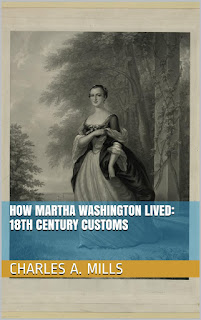Bruton Parish Church
There exists a cache of hidden documents, the contents of which are so
powerful, that their release could forever change the course of world
civilization. For centuries these
documents have been protected by a secret society known as the Order of the
Illumined, or the Illuminati. These documents have been deemed so
critical to mankind’s future that they have been called the Seventh Seal. Interestingly, these keys to the future of
mankind are buried in the cemetery of the Bruton Parish Episcopal Church in
colonial Williamsburg, Virginia. The Seventh Seal
cache is said to be housed in a brick vault constructed by Sir Francis Bacon
(1561-1626), a favorite courtier of Queen Elizabeth I. Apparently some of Bacon’s papers were also
left behind in the vault, including documentation proving his authorship of the
Shakespearian plays, his original Tudor birth records showing him to be the
illegitimate son of Queen Elizabeth I, an unabridged version of the King James
Version of the Bible, translated by Bacon, and more, including GOLD!
On September 9, 1991, a group of New Age
mystics did an unauthorized dig for the Bruton Vault in the dark hours of the
night. Their intention was to follow up on a dig performed in 1938 which
uncovered the church’s original foundations, and to bring to the public’s
attention knowledge of the precious hidden national treasure buried at Bruton
Parish. Church elders were not happy with the midnight digging, and by court order, the New Age seekers
were forbidden from returning to Virginia.
In an attempt to put an end to this urban
legend, Bruton Parish followed up on the midnight dig by commissioning
archaeologists, including Colonial Williamsburg archaeologist Marley Brown, to
retrace the steps of the 1938 excavation to answer a question that arose in 1985.
In 1985, surface tests using radar-like equipment indicated that there
was something under the Bruton Parish cemetery different from untouched
soil. That something could be, the
hidden Vault, a tree root, or surface dirt used to fill in the 1938 excavation.
After seven days of once again uncovering
the remains of the original church walls, workers looking for Sir Francis Bacon's
vault dug about 9 feet deep and reportedly found an object with brass tacks in
it. Church officials said it was a casket and would not allow them to dig
further. By August 1992 the
archaeologists hired by the Parish concluded that there was no hidden
Vault. End of story.
But this is a story that will never end
because of the way it began. New Age
followers claim the 1992 church sponsored dig was bogus. The Parish knowingly dug in the wrong
places. There may also be sinister forces at work to suppress the release
of the great secret, according to some conspiracy theorists. These sinister forces may include the Skull
& Bones secret society at Yale University (of which George W. Bush is a
member), as well as Colonial Williamsburg's benefactor, the Rockefeller family.
So just how did this urban legend get started in the first place? There was, of course, a Sir Francis
Bacon. Bacon was a well-known English
philosopher, statesman, and scientist.
Bacon is regarded as the father of empiricism and the modern “scientific
method”. Bacon's movement for the advancement of learning was connected with
the German Rosicrucian movement. The
Rosicrucians were and are a secret
society built on esoteric truths of the ancient past,
which, concealed from the average man, provide insight into nature, the
physical universe and the spiritual realm. Bacon's book New
Atlantis portrays a land ruled by Rosicrucians. How did Francis Bacon, the
Renaissance intellectual, become the center piece of an urban legend? Enter one Manly Palmer Hall.
A junior high
school dropout from a broken home, Manly Palmer Hall, who had a photographic
memory, became a one-stop scholar of ancient ideas. In 1920, at the age of nineteen, the
charismatic and movie star handsome Hall was running a church in Los Angeles.
He delivered Sunday lectures about Rosicrucianism and Theosophy, the mystical
philosophical system founded by Madame Helena Blavatsky; as well as other
esoteric teachings.
Alternative religious movements were busting out all over Southern California
in the first half of the 20th century and the devastatingly handsome Manly
Palmer Hall attracted many rich female followers, which allowed him to produce
his masterwork, The Secret Teachings of
All Ages. Through his writings and endless
lecturing, Manly Palmer Hall became one of the people principally responsible
for the birth of the New Age religious movement in the United States, first in
California, starting in the 1920s, and then beyond.
Manly Palmer Hall and his second wife
Marie Bauer Hall (they were married in 1950) are the source of the Bruton
Parish mystery. While acting as a
volunteer at Hall’s church in the 1930s, the then Marie Bauer, struck up a conversation with a visitor waiting to see
Hall. The visitor was a scholar who claimed to have deciphered codes
hidden in Shakespeare’s plays that told of a treasure hidden by Sir Francis Bacon
under a church in Virginia. Marie Bauer, who said she was clairvoyant,
felt an immediate connection between the lost treasure described by the visitor
and Bruton Parish Church. Bauer had once
been given a tea towel from Williamsburg that included a picture of Bruton
Parish Church.
Marie took her finding to Manly Hall, and together they spent many happy
hours deciphering hidden codes placed in various writings contemporary to
Francis Bacon, including A Collection of
Emblems (George Wither, 1635) and various Shakespearean plays, which
demonstrated, at least to them, that a 10 ft. by 10 ft. brick vault was buried
20 ft. deep at the Bruton Parish Church, its exact location marked by certain,
strategically placed encoded memorials in the Church cemetery. In 1938, Marie Bauer initiated an
excavation which revealed the foundations of the original Bruton Church, but no
hidden vault. Marie would have been
happy to continue digging up the church graveyard, but further excavation was halted by Church
officials.













